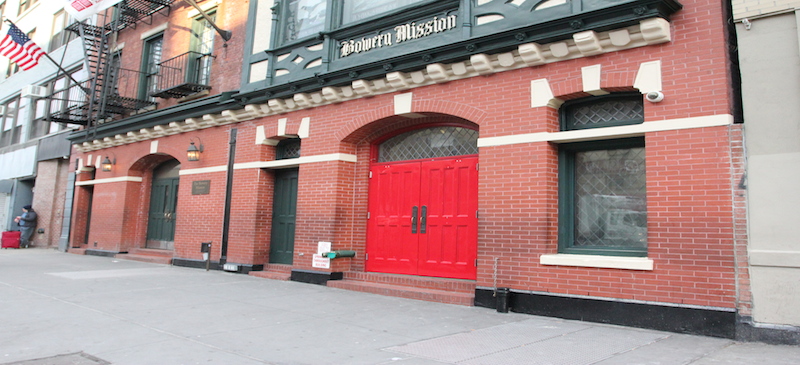Maria Walles, a young mother, found herself homeless in 2007 with her husband and her three-year-old daughter. The family worked hard to find a homeless shelter that would accept all three of them, but that was a challenge. Eventually, Walles left her daughter with family and friends because it was much easier for her and her husband to be accepted into a shelter without their daughter.
In 2010, Walles found a job and was able to afford rent for an apartment in Brooklyn. However, she lost her job in 2012 and is homeless again. Currently, she volunteers at Picture the Homeless, an organization in the Bronx that fights to end homelessness.
Walles described the stresses of being homeless: the endless amounts of paper work to apply to a homeless shelter, the poor living conditions in the shelters, the discrimination homeless people face and, not least, the separation from her family. “I’m sacrificing more than ever now,” she said.
Being homeless becomes even more stressful when a shelter’s neighbors protest the opening of a shelter, Walles said. These protests become more disheartening considering that homelessness in New York City has increased 13 percent since Mayor de Blasio has taken office, said Ryan Hickey, housing organizer for Picture the Homeless.
Homeless shelters made news recently when Joseph Lenthol, a New York State Assembly member, publically announced in November that there are too many of them in North Brooklyn.
Lenthol made this comment after a new homeless shelter opened in Greenpoint, where protestors vocally opposed the opening. While it is not unusual for people to protest the opening of a shelter, those who advocate for and work in shelters said that such resistance makes everything harder. It creates an unwelcoming environment and demonizes the homeless.
“If you have a vocal group of people who are doing everything they can to shut you down, it creates a hostile environment,” said Michael Stoops, director of community organizing for the National Coalition for the Homeless.
The protests reinforce stereotypes because people typically think of homeless people as dirty, lazy, drunks, Stoops said. This has a negative impact on the homeless because they then don’t want to come to the shelter if they feel unwelcome. The protests also affect those who work in the shelter because they then feel their work is not appreciated, said Gretchen Roth, 31, the Food Service Manager for The Bowery Mission, which supplies food and shelter on the Lower Eastside.
The protests, Roth says, “have to hurt the homeless because they already feel marginalized and that nobody wants them, so protests just reinforce that. Along those same lines, those who work in the shelters also feel like the work they are doing isn’t worth it when people protest.”
Though the Bowery Mission focuses mainly on feeding the homeless, it does offer shelter to 20 men who are also in counseling to work through drug and alcohol addictions, Roth said. The Bowery Mission is looking to expand its shelter capacity to take in more homeless people, Roth said.
As a faith-based shelter, the Bowery Mission focuses on addressing a homeless person’s spiritual needs as well. Stoops said when shelters that take in specific groups of people—like families, men, women, and veterans—then the shelters wouldn’t have to be so large and would potentially be met with less resistance. Stoops is still skeptical, though, because people will protest the opening of shelters no matter what, he said. “Even if I opened a homeless shelter for three-year-old kids, I would see resistance,” he said.
Not all shelter openings are protested. Barrier Free Living, a homeless shelter for mentally ill homeless people in the Lower East Side opened in 1990 and renovated an old, burnt-down building. In essence, the shelter helped the neighborhood look better while helping the homeless, said Paul Feuerstein, the shelter’s CEO. “There was a certain level of sympathy in terms of what we are doing. We so far have been in a place where we have had a good relationship with the neighborhood,” Feuerstein said.
Neighborhoods should embrace the homeless and their families into their community, Walles said, because they are constantly fighting to survive.
“Have respect for people who move into your community, even if it is a shelter, Walles said. She said she has one message for protestors: “Stop talking about the homeless and help us.”


Leave a Reply